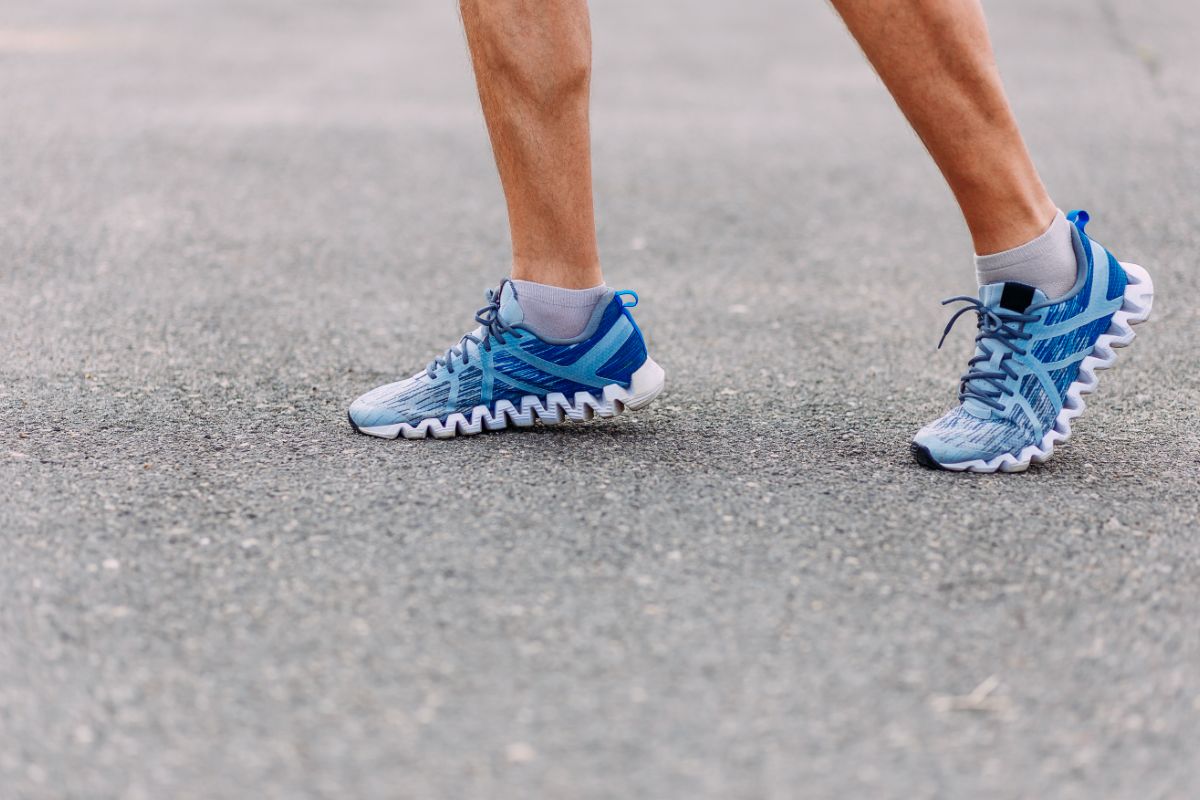According to estimates, 24 percent of athletes in the US will experience Achilles tendonitis at some point when exercising out. Achilles tendon ruptures are more common in men than in women, and they are more likely to happen in those over 50.
However, this injury can afflict anyone of any age or gender, and frequent runners are particularly susceptible to it.

In this article, we will dive deeper into what Achilles tendonitis really is, how and why it occurs, and which exercises can help you to get back on your feet.
So, let’s get started.
What Is Achilles Tendonitis?
The band of tissue that joins your calf muscles at the back of your lower leg to your heel bone – also known as the Achilles tendon – can become inflamed from overuse.
This results in an injury known as Achilles tendinitis.
Achilles tendinitis most typically arises in individuals who exercise by running frequently, but have unexpectedly increased the intensity or duration of their runs.
However, it is also rather typical among middle-aged athletes who participate in sports like basketball or tennis. Even if the person doesn’t play sports frequently, this injury could still occur.
Most occurrences of Achilles tendinitis can be managed with relatively straightforward at-home treatment while under the guidance of your doctor. Self-care techniques are typically required to stop reoccurring episodes.
Unfortunately, Achilles tendon ruptures caused by more severe occurrences of the condition may need surgery to be repaired. In these cases, you will need to speak to your doctor for further medical advice.
What Causes Achilles Tendonitis?
Achilles tendonitis often develops as a result of running for longer stretches of time or with greater force than the tendon can handle. If the runner simply worked out harder than their bodies were accustomed to, it might happen.
Since the Achilles tendon primarily functions from 10° below perpendicular to 20° above parallel during the running stride, flexibility and stretching have almost nothing to do with problems that stem from the Achilles tendon.
This indicates that vigor, not duration, is typically the concern here.
The ideal strategy to treat Achilles tendonitis is to raise the overall workload your legs can support, while also encouraging the tendon to heal on its own through exercise therapy.
The Most Effective Exercises For Achilles Tendonitis
The optimum strength training regimen for runners with minor Achilles tendon concerns is a three-times-per-week regimen.
It’s important to keep in mind that finding a medical professional who can get you going with a customized program is helpful if you have a lot of pain or have experienced discomfort for a long time.

The improper exercises may further harm your tendons, leading to more serious problems in the future.
Here are three exercises that may help heal your damaged Achilles tendon. Remember not to push yourself if you experience extreme discomfort during these activities.
1. The One Leg Calf Raise-Off Step
The ideal exercise for strengthening your lower leg so that it will support you when jogging in the future is a calf raise.
Increasing weight reduces the risk that you will re-injure the Achilles tendon by raising the amount of beneficial pressure that passes through it. While you develop more leg strength, the load helps to retrain your body.
For three seconds, elevate your calf; after that, take a three-second break. Then, repeat.
2. The Calf Extension With Band
This is an additional technique for loading and bolstering the calf and Achilles.
To complete this exercise, which will help to develop the muscles in your leg, you will need a resistance band on hand. If you do not own one, consider purchasing one, as these are great tools for building resistance in your muscles.
Move slowly while tightening the band, and then hold out for 3 seconds. Following this by moving back and resting for a further 3 seconds.
3. The Seated Soleus Raises
When we run, the Soleus, one of the major muscles that runs down your calf, handles more weight than any other part of the leg.
The Achilles is situated close to the Soleus, which is why it is important to consider the fact that they affect each other.
Once more, you should spend 3 seconds up and 3 seconds down.
Final Thoughts
While we encourage you to try out these exercises for yourself, we cannot stress enough that you should contact a medical professional if you feel that you are experiencing extreme discomfort.
Damaged tendons are no joke, and if the injury is particularly serious, you may need to consider surgery.
We wish you the best of luck, and we wish you a speedy recovery.
- Can Dogs Run Faster Than Humans? (Running With Your Furry Friend) - October 4, 2022
- 10 Doggie Fun Runs You Will Love [Ultimate Guide] - October 4, 2022
- What Are Division Results In Running? - October 4, 2022








